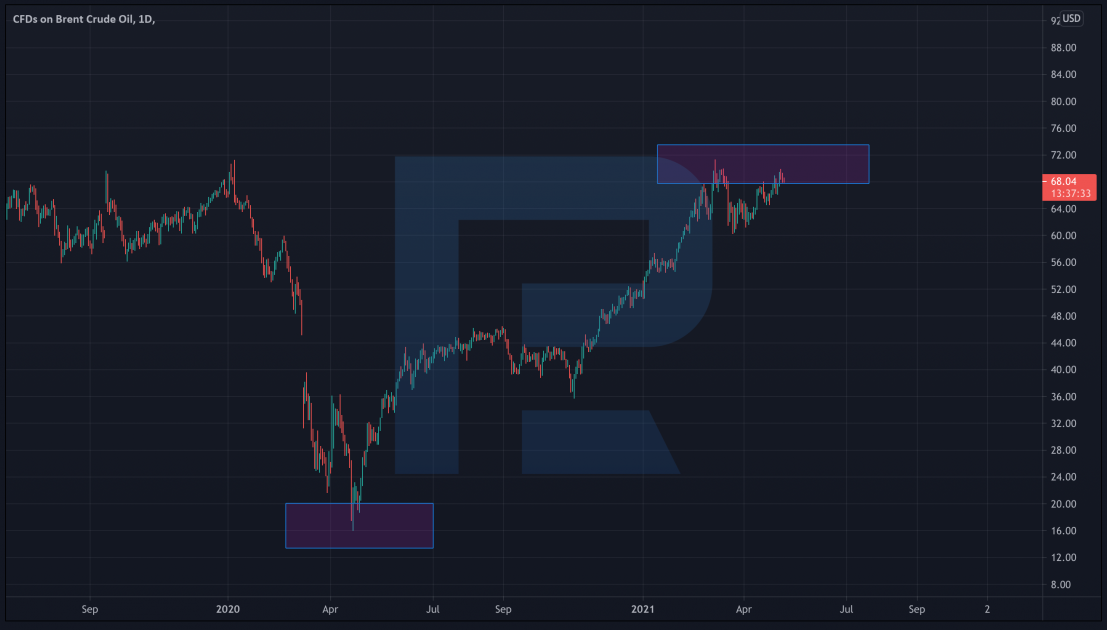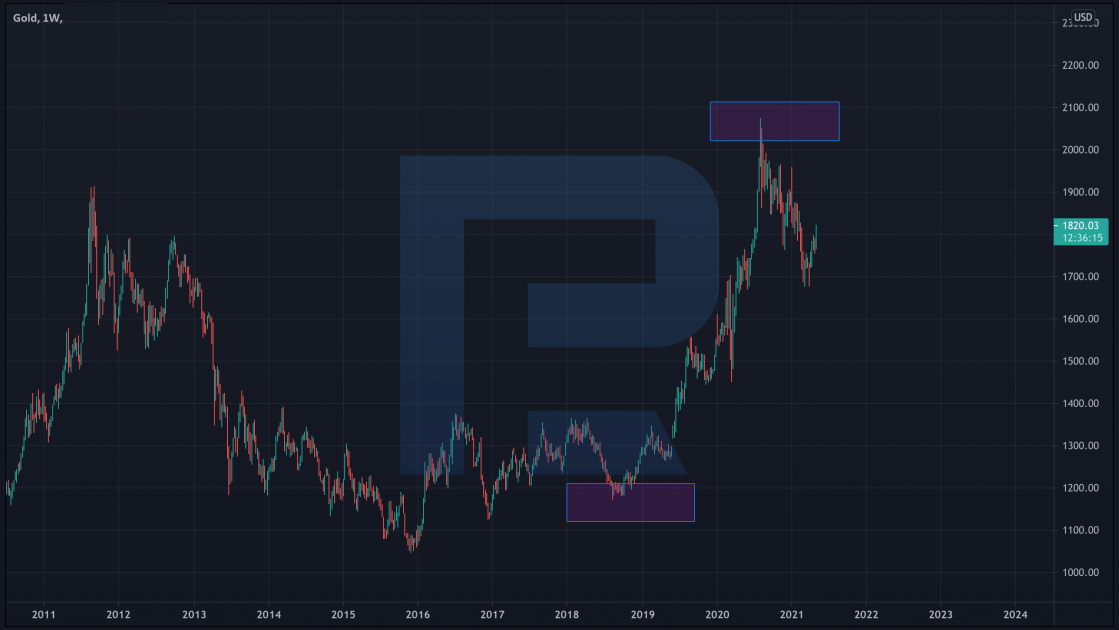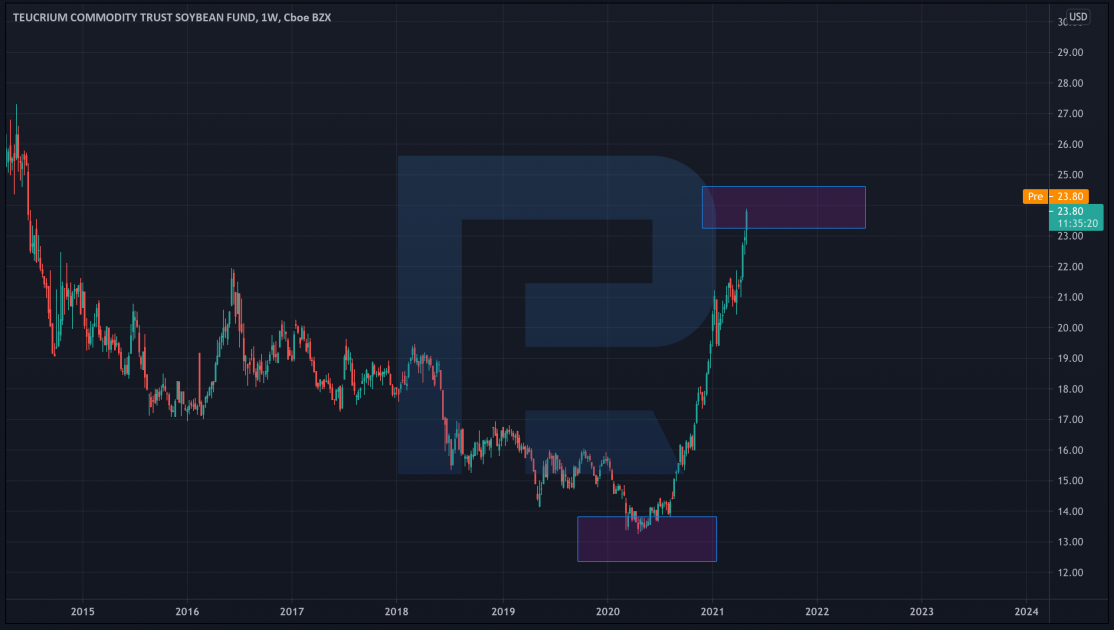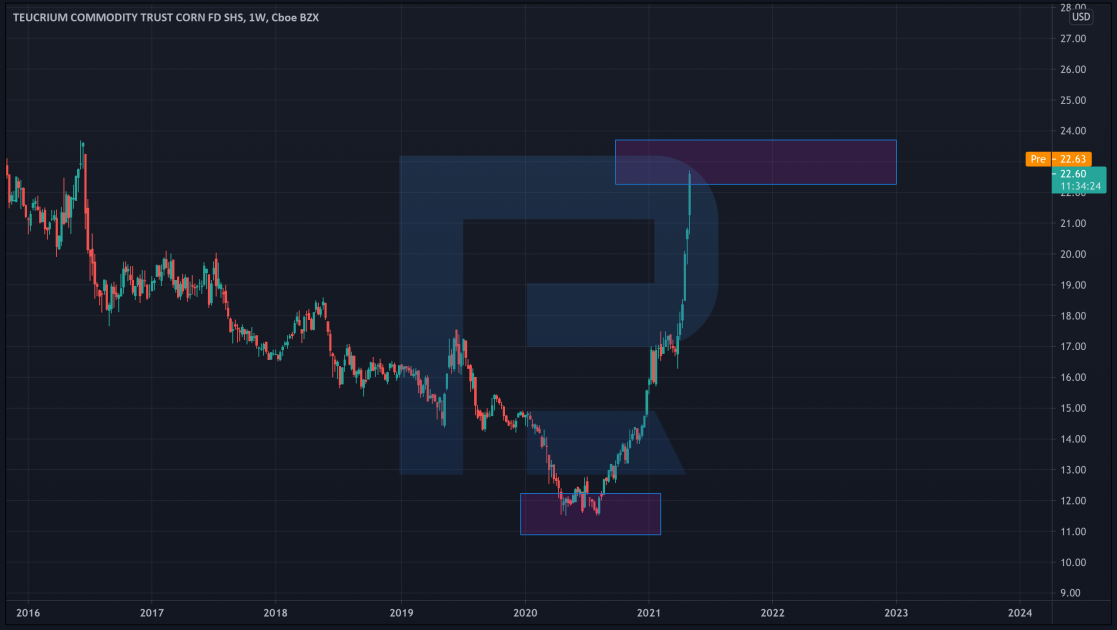How to Trade Commodities: Guide for Beginners

6 minutes for reading
Speculating commodities is yet another opportunity for investors to make money. Such goods are most often resources that sustain the world economy, and any changes in the latter lead to commodity price fluctuations.
Many traders are discouraged from trading commodities because trading principles are hard to perceive, while a simple habit of trading currency pairs is strong. If you do decide to take up trading commodities, from this article you will get to know what these goods are, what influences their price, and how to trade them.
You can visit the RoboForex Market Analysis webpage for the latest Commodities forecasts.
What are primary commodities?
In this article, I am going to use primary commodities and just commodities as synonyms. Commodities are raw materials meant for further processing and producing some products. Commodities include the results of agricultural work, such as grain, or mineral resources, such as oil, gas, gold, and a much longer list of goods.
This type of asset is characterized by lengthy trends. Currency pairs get into flats sometimes (which means the quotations demonstrate no clear direction), while oil demonstrates directed movements most of the time. This peculiarity is to be kept in mind when trading such assets. Experienced traders advise opening positions with at least a 6-months perspective.
What commodities are there?
All commodities can be split into categories, which are as follows.
Energy
Energy carriers are WTI and Brent oil, natural gas, fuel oil, gasoline, etc. Note that Brent has been in a stable uptrend since April 2020. At that time, the quotations were as low as 16 USD per barrel while by now they have reached 70 USD.

Economic stimulation during the coronavirus pandemic made oil prices grow all over the world. Large banks have already started talking about the renewal of a long-term cycle of oil price growth with the aim above 120 USD per barrel. If you are particularly interested in this commodity, I recommend an article devoted to it:
Metals
This group contains gold, silver, platinum, copper, and other precious and mined metals. In crises and turmoil, investors often put their money in gold because it is considered a protective asset.

This metal has, indeed, been growing since mid-2018, and in 2020 it renewed another all-time high. The world economy is now coming back to normal, which means oil prices have shrunk somewhat; the danger of a crisis has passed, but traders are still expecting another attempt of growth in the nearest future. We also have an article about gold in our blog, with examples and details:
Agricultural products
This category includes such assets as cotton, coffee, corn, soy, sugar. Here, quotations are influenced by weather conditions. If you are willing to invest in such assets, keep in mind that the growth of population and bad weather conditions can push the price up, giving you a chance to make a profit on such investments.
How to trade commodities?
Now that we have figured out what commodities are let us have a look at the ways of trading such instruments. There are several popular investment options.
Actual purchase
One way to invest in commodities is to directly buy them. After you buy, you just need to wait for the price to grow, then find a buyer and sell your commodity to them with high added value; this works well with gold or silver, for example. Such an investment strategy gives you access to physically existing gold or other precious metals and then feel the effect of your investment. However, the high costs of such investments or investing just in precious metals makes this investment option relatively unattractive.
Futures for commodities
One of the most widespread ways of trading commodities is buying and selling futures in the stock market. The idea of a futures is that a buyer contracts to buy the good in the future at a certain price. However, things do not get to real supply: about the expiry date, the contract must be closed.
If the trader expects the price for a good to grow in the future, they only need to buy a futures contract: if the p[rice does grow, they will make a profit. The drawback of such a method is a commission fee for trades. A huge advantage is the lack of all the costs of a physical purchase.
CFDs for commodities
A CFD (Contract For Difference) is a financial instrument that allows trading any good without physically buying it, making money just on the price difference.
Some types of broker accounts allow trading CFDs without commission fees for opening and closing positions, “paying” just for the spread, which is the difference between the buying and selling prices.
Shares
Another way of trading commodities is buying the shares of companies that are directly connected to some commodity. For example, instead of buying oil directly, you can invest in the shares of an oil company.
However, here as well the cost of the share will depend directly on the price of the base asset. If oil prices grow, the share of oil companies will also go upwards. Traders note that investments in the shares of companies that deal with commodities are less risky than direct investments in commodities. Some companies still make profits even when commodity prices are falling.
ETFs for commodities
An ETF is a ready-made set of commodity shares. Such trusts gather the money of small investors to create one big portfolio. The fund can also buy futures and shares of various commodity companies. Commodity ETFs are considered cheap, accessible, and liquid. Here, an investor with moderate capital can access a wide range of commodities with no need to manage a stock portfolio.
As for changes in prices for commodity ETFs, I can give you the following examples. Soy ETF (Teucrium Soybean) started growing actively from 13 USD in April 2020, reaching 23 USD by now.

Sugar ETF (Teucrium Sugar) has broken through the long-term declining trendline, which might precede a probable increase in price. As for corn ETF (Teucrium Corn), its price has doubled since the beginning of the year.

Closing thoughts
Trading commodities is peculiar in several ways. Such instruments are characterized by strong trend movements and increased volatility. Quite probably, the analysis of commodity markets by Ichimoku or Simple Moving Averages will give you better entry ideas than graphic instruments of tech analysis.
One point of gold or oil costs more than that in currency pairs, so it will be wise to start with a demo account and a strict system of risk management. However, risks are no reason for leaving these instruments unattended as you can always opt for a conservative trading option.
One large advantage of investments in commodities is the fact that this is a completely different market that has no connection to either currency or stock markets, which means investors can use this for diversifying their portfolios.







